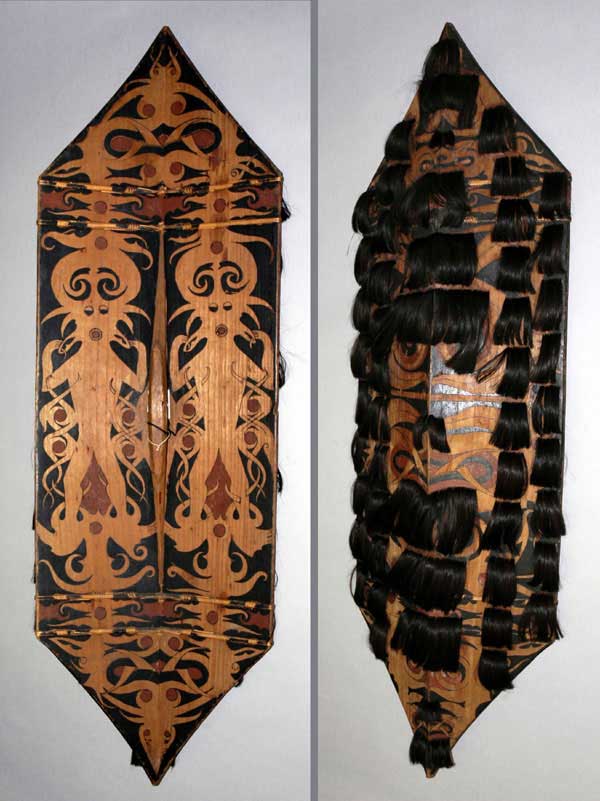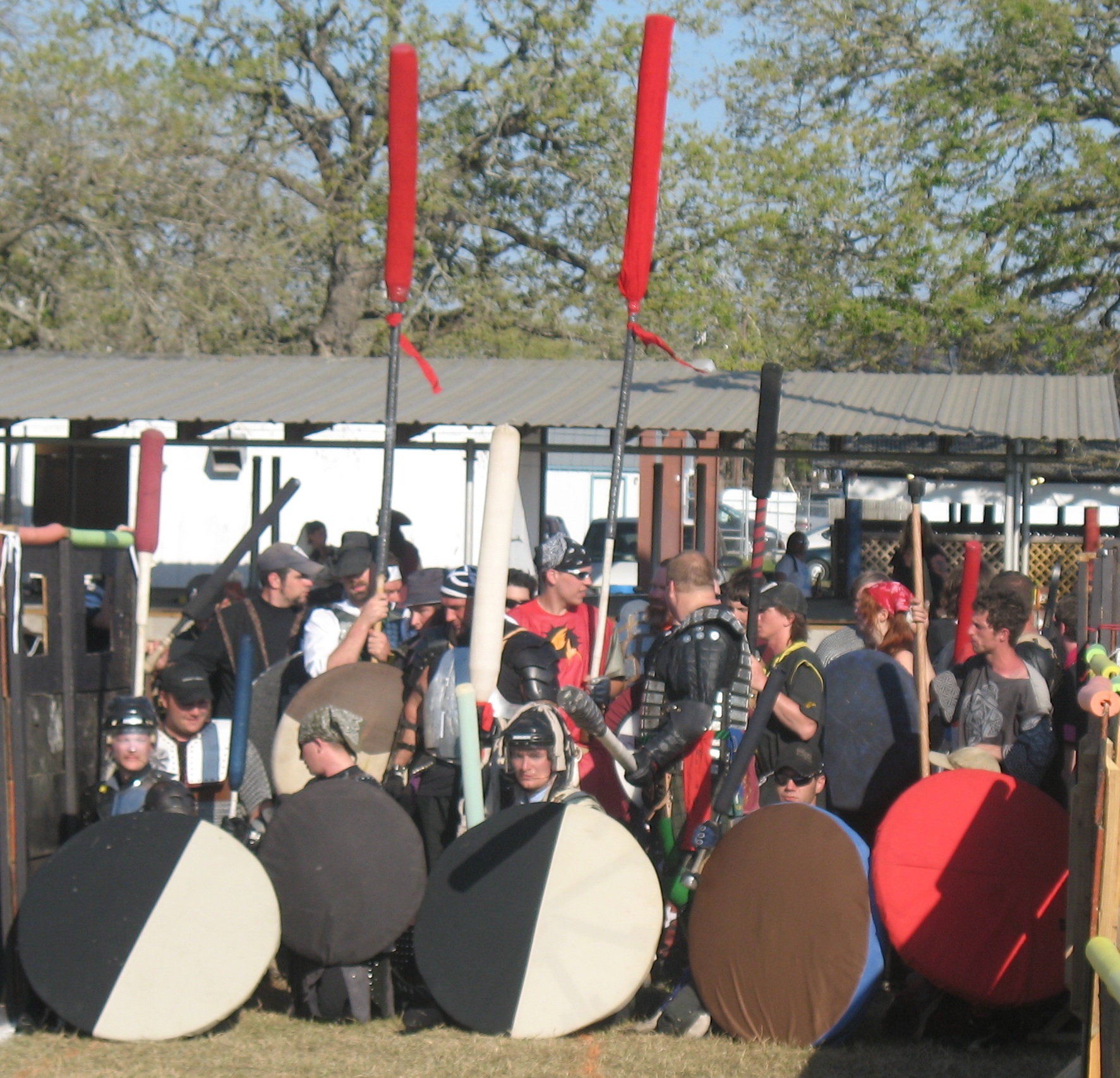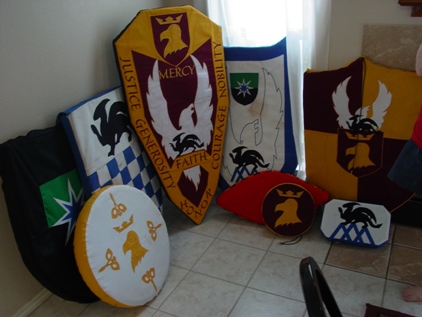Shield
From the Rulebook
Weapon Types, Shields, and Equipment Melee · Shields · Projectiles · Bow · Siege Weapons · Other Equipment
In Real Life
The oldest form of shield was a protection used to block attacks by hand weapons, such as swords, axes and maces or missiles like spears and arrows. Shields have varied greatly in construction over time and place. Sometimes shields were made of metal, but wood or animal hide construction was much more common; wicker and even turtle shells have been used. Many surviving examples of metal shields are generally felt to be ceremonial rather than practical, for example the Yetholm-type shields of the Bronze Age or the Iron Age Battersea shield.

Size and weight varied greatly, lightly armored warriors relying on speed and surprise would generally carry light shields that were either small or thin. Heavy troops might be equipped with large heavy shields that could protect most of the body. Many had a strap called a guige that allowed it to be slung over the user's back when not in use or on horseback. During the 14th-13th Century, the Sards or Shardana, working as mercenaries for the Egyptian pharaoh Ramses II, utilized either large or small round shields against the Hittites. The Ancient Greek hoplites used a round, bowl-shaped wooden shield called an aspis. Examples of German wooden shields c350 BC - 500 AD survive from Weapons sacrifices in Danish bogs. Free standing shields called pavises were used by medieval crossbowmen who needed protection while reloading.
The heavily armored Roman legionaries carried large shields (scuta) that could provide far more protection, but made swift movement a little more difficult. The scutum originally had an oval shape, but gradually the curved tops and sides were cut to produce the familiar rectangular shape most commonly seen in the early Imperial legions. Famously, the Romans used their shields to create a tortoise-like formation called a testudo in which entire groups of soldiers would be enclosed in an armoured box to provide protection against missiles.
Many ancient shield designs featured incuts of one sort of another. This was done to accommodate the shaft of a spear, thus facilitating tactics requiring the soldiers to stand close together forming a wall of shields.
In the early European Middle Ages, kite shields were commonly used; these were rounded at the top and tapered at the bottom. They were easily used on horseback and allowed easier leg movement when dismounted. As personal body armour improved, knight's shields became smaller, leading to the familiar heater shield style. Both kite and heater style shields were made of several layers of laminated wood, with a gentle curve in cross section. The heater style inspired the shape of the symbolic heraldic shield that is still used today. Eventually, specialised shapes were developed such as the bouche — which had a lance rest cut into the upper corner of the lance side, to help guide it in combat or tournament.
In time, some armoured foot knights gave up shields entirely in favour of mobility and two-handed weapons. Other knights and common soldiers adopted the buckler (origin of the term "swashbuckler"[1]). The buckler is a small round shield, typically between 8 and 16 inches (20-40 centimeters) in diameter. The buckler was one of very few types of shield that were usually made of metal. Small and light, the buckler was easily carried by being hung from a belt; it gave little protection from missiles and was reserved for hand-to-hand combat. The buckler continued in use well into the 16th Century.
In Italy, the targa, parma and rotella were utilized by common people, fencers and even knights. The development of plate armour made shields less and less common as plate armour eliminated the need for a shield. Lightly armoured troops continued to use shields after men-at-arms and knights ceased to use them. Shields continued in use even after gunpowder powered weapons made them essentially obsolete on the battlefield. In the 18th Century, the Scottish clans used a small, round shield called a targe that was partially effective against the firearms of the time although it was arguably more often used against British infantry bayonets and cavalry swords in close-in fighting.
In the 19th Century, non-industrial cultures with little access to guns were still using shields. Zulu warriors carried large lightweight shields made from a single ox hide supported by a wooden spine, these were called Ishlangu. This was used in combination with a short spear (assegai) and/or club.
Links
- How to make a Amt legal Sheild by Vaargard
- how to make a center grip shield by Fitz
- Heater Shield Size Calculator
Materials
- Pelican Sleds - good, lightweight, sturdy
- Riva Sports: space saucer, snowsled - good, heavy duty
- Some shields are made entirely of Polyethylene Plank Foam
- Check out the Amtgard Resources page for more information.
See Also:

